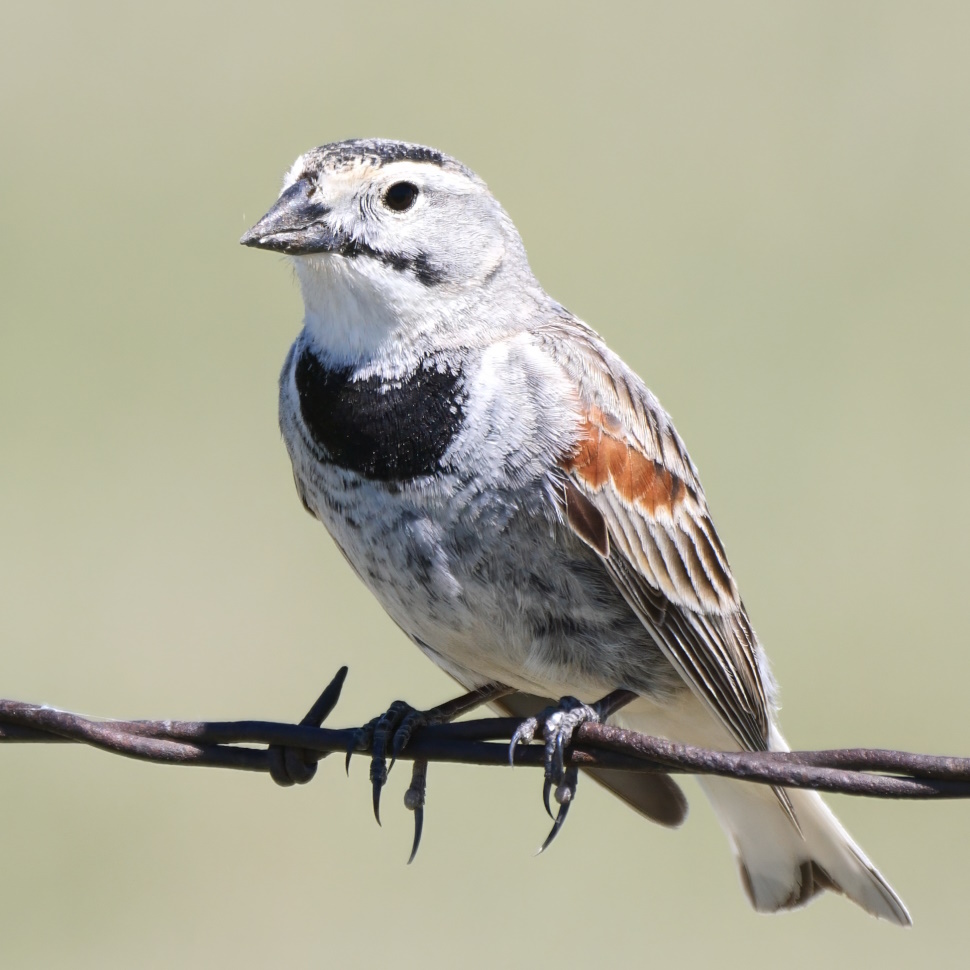Residents are being asked to keep an eye out for a couple of prairie songbirds that are at risk in the province.
The thick-billed longspur is listed federally as threatened, while the chestnut-collared longspur is listed as endangered.
These colourful birds, known for their sweet songs, make their homes in prairie grasslands.
“They are grassland specialists, so they’re one of the very special birds that makes their home right in the grass of our grasslands,” said Emily Putz, habitat stewardship co-ordinator for Nature Saskatchewan’s Stewards of Saskatchewan program.
These birds get their name from their extraordinarily long back talon. Otherwise, they can be hard to identify and often share the same patch of land.
Both species have streaky brown backs, black facial markings, and black and chestnut patches.
The thick-billed longspur has a black patch on its chest, a grey belly, and a chestnut patch on its wings. The chestnut-collared longspur has a black belly and a chestnut patch on the collar, or nape, of its neck, and is often more colourful overall.
Both species are at risk due to habitat loss.
“Both of these guys, their biggest threat would be habitat loss and destruction. So, since they are a short-grass specialist species, they require our native prairie, which of course is being destroyed at a large rate year to year,” Putz said.
While both species live in similar habitats, the chestnut-collared longspur prefers shorter grass and is known to follow cattle herds to find ideal conditions.
“They really need the cattle on the landscape and the ranching community to create these patches of ideal habitat within the remaining prairie chunks,” Putz said.
Meanwhile, the thick-billed longspur prefers taller vegetation within grazed areas.
In southern Saskatchewan, the chestnut-collared longspur is a bit more widespread and can be found around Moose Jaw, toward the Qu’Appelle Valley, as well as south of the city.
The thick-billed longspur has been sighted more often southwest of Moose Jaw, but there have been isolated spottings around Old Wives Lake.
“They can both be found south of Moose Jaw, but definitely the chestnut-collared longspur are more likely to be there just with their habitat needs,” said Putz.
Nature Saskatchewan is monitoring the population of these birds under the Stewards of Saskatchewan banner program, which works with rural landowners and managers to conserve and monitor at-risk species.
If you have spotted either of these longspur species, you are asked to contact Nature Saskatchewan’s free HOOT line at 1-800-667-4668 or email Putz at outreach@naturesask.ca. Personal information will not be shared without permission.
